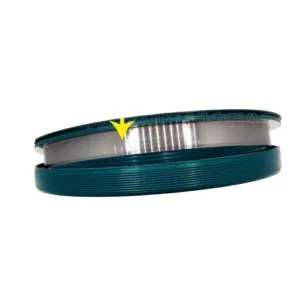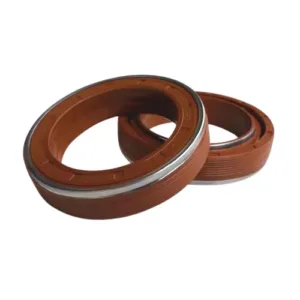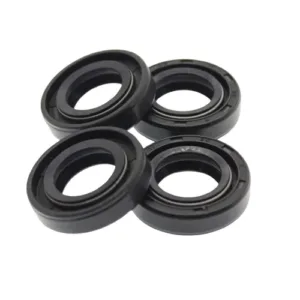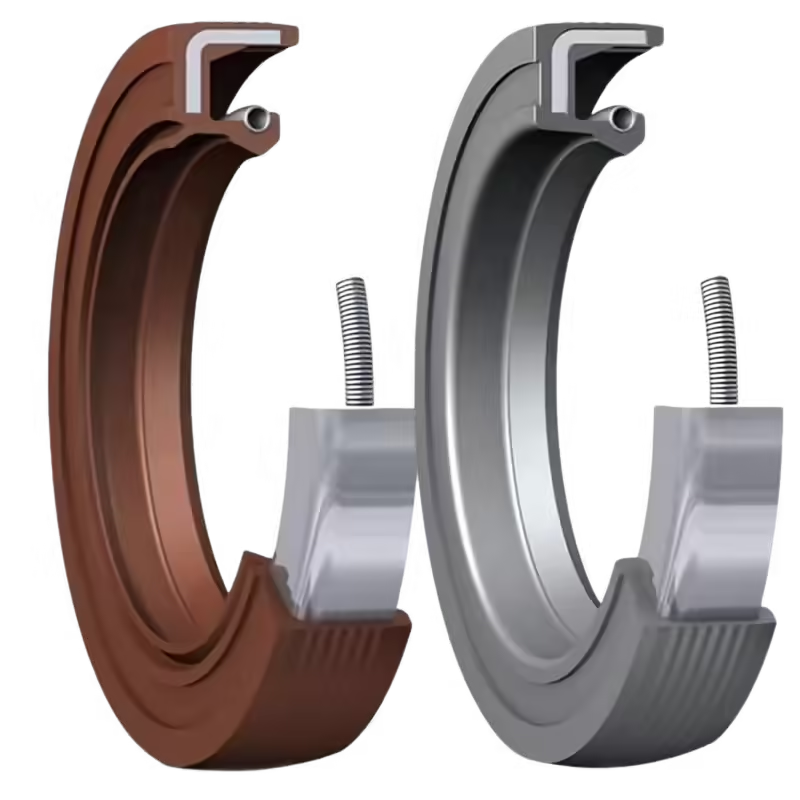Rotary Tiller Center Shaft Oil Seal Selection: A Complete Guide for Optimal Performance
Introduction
Rotary tillers are crucial machinery in agriculture, breaking up soil for planting crops and ensuring optimal soil aeration. The efficiency and longevity of these machines heavily rely on the integrity of their components, particularly the oil seals. Oil seals play a pivotal role in maintaining the function of rotary tillers, especially in the center shaft assembly, where seals help prevent oil leakage and protect the internal mechanisms from dust, debris, and moisture.
For manufacturers like DRO, working in highly dusty environments presents challenges that demand advanced sealing solutions to ensure smooth operations.
1. Understanding the Role of Oil Seals in Rotary Tillers
Oil seals, also known as shaft seals, are designed to prevent the leakage of oils or lubricants and keep contaminants from entering the machinery. In rotary tillers, they are essential for sealing the rotating shafts, ensuring the longevity of the gearbox, bearings, and other moving parts. Without proper oil seals, oil can leak out, and debris can infiltrate the system, causing accelerated wear and potential equipment failure.
The effectiveness of an oil seal directly impacts the operational efficiency of the tiller, reducing maintenance costs and improving machine uptime.
2. Key Factors to Consider When Selecting a Rotary Tiller Center Shaft Oil Seal
Material Compatibility
Choosing the right material for the oil seal is crucial. Common materials used for rotary tiller oil seals include rubber, fluorocarbon, and polyurethane. Each material has its unique benefits:
- Rubber offers flexibility and good sealing properties under moderate temperatures.
- Fluorocarbon is ideal for high-temperature resistance and chemical exposure.
- Polyurethane is known for its wear resistance and durability under high friction.
When selecting the material, consider the operational environment, such as exposure to high temperatures, chemicals, or UV light.
Operating Temperature Range
Rotary tillers can experience extreme temperature variations, from the cold mornings to the heat generated by the engine. Choosing a seal that can withstand high friction and varying temperatures is essential to prevent premature wear and failure.
Shaft Diameter and Tolerance
The seal must match the diameter of the shaft and adhere to the proper tolerance levels for a tight fit. An improper fit can lead to leaks and diminished sealing performance.
Seal Design
- Lip Configuration: The lip design, whether single-lip or double-lip, greatly affects sealing performance. A double-lip seal offers better protection against contaminants.
- Spring-loaded vs. Non-spring-loaded: Spring-loaded designs help maintain consistent pressure on the sealing surfaces, improving longevity and reducing wear.
Working Pressure and Speed
Operating conditions such as pressure and rotational speed also dictate the type of seal needed. Seals must be chosen based on their ability to perform under high pressure and varying speeds to ensure the machine’s reliability.
3. Common Challenges in Rotary Tiller Center Shaft Seals
Wear and Tear
Exposure to dirt, moisture, and high temperatures can lead to premature wear of the seals. Proper lubrication and routine maintenance are essential to reducing wear and extending the seal’s life.
Seal Contamination
In environments where rotary tillers work in dusty conditions, such as those often faced by DRO, contamination is a significant issue. Soil, dust, and debris can damage seals, leading to leaks or failure. Seals need to be designed with enhanced dust protection for such demanding environments.
Misalignment and Improper Installation
Improper installation or shaft misalignment can lead to significant seal failure. Correct installation procedures and ensuring proper alignment are critical to extending the life of the oil seal.
4. Solutions Developed by DRO for Dusty Environments
DC Type Skeleton Oil Seal
DRO’s DC Type Skeleton Oil Seal is designed to tackle the challenges of dusty environments. Featuring a dual-lip design with an additional dust lip, this seal offers enhanced dust protection. The spring-loaded secondary lip ensures a long-lasting seal, while the interference between the lips optimizes sealing performance.
MC Self-Rotating Oil Seal
The MC Self-Rotating Oil Seal was developed based on feedback from customers experiencing wear with traditional seals. This seal’s self-rotating design reduces friction, improving wear resistance and making it ideal for high-dust and high-friction environments.



5. How to Maintain and Extend the Life of Your Rotary Tiller Center Shaft Oil Seal
Regular Inspection
Inspect the oil seals periodically for signs of wear, cracks, or leakage. Early detection of damage allows for timely replacement and avoids costly repairs.
Proper Lubrication
Appropriate lubrication is essential for extending the life of oil seals. Choose lubricants that match the operational conditions of your rotary tiller to prevent premature degradation of the seal material.
Seal Replacement Guidelines
If oil leakage or increased friction is observed, it’s time to replace the oil seal. Follow a step-by-step guide for replacing worn-out seals to ensure proper installation and optimal performance.
6. Choosing the Right Supplier for Rotary Tiller Center Shaft Oil Seals
Quality Assurance
When choosing a supplier, ensure they have a proven track record of providing high-quality seals. Look for certifications and quality control practices that guarantee the seals will perform as expected.
Custom Seal Solutions
Some suppliers offer custom solutions, tailoring seals to fit specific rotary tiller models or harsh operating conditions. Working with a supplier who offers tailored solutions ensures that your oil seals are perfectly suited to your needs.
Customer Support and After-Sales Service
Select a supplier who provides ongoing support and after-sales service. This includes guidance on seal installation, product warranties, and post-purchase consultations for optimal performance.
Conclusion
Selecting the right rotary tiller center shaft oil seal is crucial for ensuring your machine’s efficiency and longevity. By considering factors like material compatibility, temperature range, and proper installation, you can ensure that your tiller operates smoothly for years. Partnering with a trusted supplier, like DRO, can further help you maintain your equipment’s performance with quality oil seals.
Contact Information
For more information or inquiries, please visit our website: drorubber.com
WhatsApp: +0086 15815831911
WeChat: +0086 13784044874





